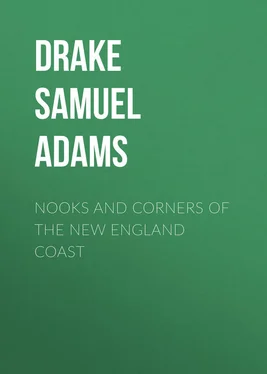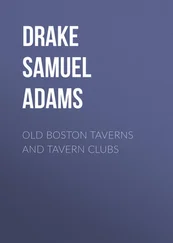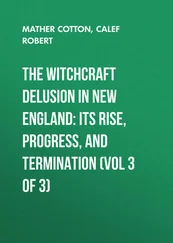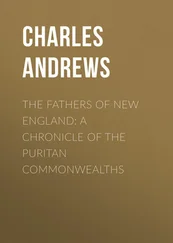Samuel Drake - Nooks and Corners of the New England Coast
Здесь есть возможность читать онлайн «Samuel Drake - Nooks and Corners of the New England Coast» — ознакомительный отрывок электронной книги совершенно бесплатно, а после прочтения отрывка купить полную версию. В некоторых случаях можно слушать аудио, скачать через торрент в формате fb2 и присутствует краткое содержание. Жанр: foreign_antique, foreign_prose, на английском языке. Описание произведения, (предисловие) а так же отзывы посетителей доступны на портале библиотеки ЛибКат.
- Название:Nooks and Corners of the New England Coast
- Автор:
- Жанр:
- Год:неизвестен
- ISBN:нет данных
- Рейтинг книги:3 / 5. Голосов: 1
-
Избранное:Добавить в избранное
- Отзывы:
-
Ваша оценка:
- 60
- 1
- 2
- 3
- 4
- 5
Nooks and Corners of the New England Coast: краткое содержание, описание и аннотация
Предлагаем к чтению аннотацию, описание, краткое содержание или предисловие (зависит от того, что написал сам автор книги «Nooks and Corners of the New England Coast»). Если вы не нашли необходимую информацию о книге — напишите в комментариях, мы постараемся отыскать её.
Nooks and Corners of the New England Coast — читать онлайн ознакомительный отрывок
Ниже представлен текст книги, разбитый по страницам. Система сохранения места последней прочитанной страницы, позволяет с удобством читать онлайн бесплатно книгу «Nooks and Corners of the New England Coast», без необходимости каждый раз заново искать на чём Вы остановились. Поставьте закладку, и сможете в любой момент перейти на страницу, на которой закончили чтение.
Интервал:
Закладка:
Other earth-works besides those already mentioned may be traced. Two small batteries that guarded the approaches on the side of the cove are distinct. Some of these works were renovated during the reoccupation of Castine by the British in 1812. Others seen on the shores of the harbor are of more recent date.
A speaking reminder of by-gone strife is an old cannon, lying on the greensward under the walls of Fort George, of whose grim muzzle school-girls were wont to make a post-office. There was poetry in the conceit. Never before had it been so delicately charged, though I have known a perfumed billet-doux do more damage than this fellow, double-shotted and at point-blank, might effect.
CHAPTER V.
CASTINE — continued
"Baron Castine of St. Castine
Has left his château in the Pyrenees,
And sailed across the western seas."
I confess I would rather stand in presence of the Pyramids, or walk in the streets of buried Pompeii, than assist at the unwrapping of many fleshless bodies. No other medium than the material eye can grasp a fact with the same distinctness. It becomes rooted, and you may hang your legends or traditions on its branches. It is true there is a class who journey from Dan to Beersheba, finding all barren; but the average American, though far from unappreciative, too often makes a business of his recreation, and devours in an hour what might be viewed with advantage in a week or a month.
After this frank declaration, the reader will not expect me to hurry him through a place that contains so much of the crust of antiquity as Castine, and is linked in with the Old-world chronicles of a period of surpassing interest, both in history and romance.
Very little of the fort of the Baron Castin and his predecessors, yet enough to reward the research of the stranger, is to be seen on the margin of the shore of the harbor, less than half a mile from the central portion of the town. The grass-grown ramparts have sunk too low to be distinguished from the water in passing, but are evident to a person standing on the ground itself. Not many years will elapse before these indistinct traces are wholly obliterated. 29 29 In 1759 Governor Pownall took possession of the peninsula of Castine, and hoisted the English flag on the fort. He found the settlement deserted and in ruins. — Gov. Pownall's Journal.
The bank here is not much elevated above high-water mark, while at the wharves it rises to a higher level, and is ascended by stairs. The old fort was placed near the narrowest part of the harbor, with a firm pebbly beach before it. Small boats may land directly under the walls of the work at high tide, or lie protected by the curvature of the shore from the heavy seas rolling in from the outer harbor. The high hills over which we were rambling in the preceding chapter ward off the northern winds.
A portion of the ground covered by old Fort Pentagoët is now occupied by buildings, a barn standing within the circumvallation, and the dwelling of Mr. Webb between the shore and the road. A little stream of sweet water trickles along the south-west face of the work, and then loses itself among the pebbles of the beach.
Fort Pentagoët, at its rendition by Sir Thomas Temple, in 1670, after the treaty of Breda, was a rectangular work with four bastions. The height of the curtains within was eight feet. On entering the fort a corps de garde , twelve paces long and six broad, stood at the left, with a logis , or quarter, on the opposite side of the entrance. On the left side were also two store-houses, each thirty-six paces long by twelve in breadth, covered with shingles. Underneath the store-houses was a cellar of about half their extent, in which a well had been sunk. Above the entrance was a turret, built of timber, plastered with clay, and furnished with a bell. At the right hand was a barrack of the same length and breadth as the store-houses, and built of stone. Sixty paces from the fort was a cabin of planks, in which the cattle were housed; and at some distance farther was a garden in good condition, having fruit-trees. There were mounted on the ramparts six six-pounder and two four-pounder iron cannon, with two culverins. Six other pieces were lying, useless and dismounted, on the parapet. Overlooking the sea and detached from the fort was a platform, with two iron eight-pounders in position.
The occupant of the nearest house told me an oven constructed of flat slate-stones was discovered in an angle of the work; also that shot had been picked up on the beach, and a tomahawk, and stone pipe taken from the well. The whole ground has been explored with the divining-rod, as well within as without the fort, for treasure-trove; though little or nothing rewarded the search, except the discovery of a subterranean passage opening at the shore.
These examinations were no doubt whetted by an extraordinary piece of good luck that befell farmer Stephen Grindle, while hauling wood from a rocky hill-side on the point at the second narrows of Bagaduce River, about six miles from Castine peninsula. In 1840 this worthy husbandman saw a shining object lying in the track of his oxen. He stooped and picked up a silver coin, as bright as if struck within a twelvemonth. On looking at the date, he found it to be two hundred years old. Farther search was rewarded by the discovery of several other pieces. A fall of snow interrupted the farmer's investigations until the next spring, when, in or near an old trail leading across the point, frequented by the Indians from immemorial time, some seven hundred coins of the nominal value of four hundred dollars were unearthed near the surface. All the pieces were of silver.
The honest farmer kept his own counsel, using his treasure from time to time to pay his store bills in the town, dollar for dollar, accounting one of Master Hull's pine-tree shillings at a shilling. The storekeepers readily accepted the exchange at the farmer's valuation; but the possession of such a priceless collection was soon betrayed by its circulation abroad.
Dr. Joseph L. Stevens, the esteemed antiquary of Castine, of whom I had these particulars, exhibited to me a number of the coins. They would have made a numismatist's mouth water. French écus, Portuguese and Spanish pieces-of-eight, Bremen dollars, piasters, and cob-money, 30 30 "The clumsy, shapeless coinage, both of gold and silver, called in Mexico máquina de papa , lote y cruz ("windmill and cross-money"), and in this country by the briefer appellation of "cobs." These were of the lawful standards, or nearly so, but scarcely deserved the name of coin, being rather lumps of bullion flattened and impressed by a hammer, the edge presenting every variety of form except that of a circle, and affording ample scope for the practice of clipping: notwithstanding they are generally found, even to this day, within a few grains of lawful weight. They are generally about a century old, but some are dated as late as 1770. They are distinguished by a large cross, of which the four arms are equal in length, and loaded at the ends. The date generally omits the thousandth place; so that 736, for example, is to be read 1736. The letters PLVS VLTRA ( plus ultra ) are crowded in without attention to order. These coins were formerly brought here in large quantities for recoinage, but have now become scarce." – William E. Dubois, United States Mint . I think the name of "cob" was applied to money earlier than the date given by Mr. Dubois. Its derivation is uncertain, but was probably either "lump," or from the Welsh, for "thump," i. e. , struck money.
clipped and battered, with illegible dates, but melodious ring, chinked in better fellowship than the sovereigns whose effigies they bore had lived in. A single gold coin, the only one found in the neighborhood of Castine, was picked up on the beach opposite the fort. 31 31 On an old map of unknown date Castin's houses are located here.
Интервал:
Закладка:
Похожие книги на «Nooks and Corners of the New England Coast»
Представляем Вашему вниманию похожие книги на «Nooks and Corners of the New England Coast» списком для выбора. Мы отобрали схожую по названию и смыслу литературу в надежде предоставить читателям больше вариантов отыскать новые, интересные, ещё непрочитанные произведения.
Обсуждение, отзывы о книге «Nooks and Corners of the New England Coast» и просто собственные мнения читателей. Оставьте ваши комментарии, напишите, что Вы думаете о произведении, его смысле или главных героях. Укажите что конкретно понравилось, а что нет, и почему Вы так считаете.












